#shark coprolite fossil
Explore tagged Tumblr posts
Photo

Fossil Shark Coprolite with Fish Scales & Bone London Clay Eocene Isle of Sheppey Kent UK Authentic Specimen
This listing features a fossilised shark coprolite (poo) containing preserved fish scales and bone fragments, collected from the world-renowned London Clay Formation on the Isle of Sheppey, Kent, UK. This is a carefully selected and scientifically significant specimen from the Lower Eocene Epoch, and comes with a Certificate of Authenticity.
Coprolites are trace fossils representing the preserved faeces of ancient animals. In this case, the specimen is attributed to a predatory shark, as indicated by the inclusion of fish scale and bone material—evidence of diet and digestive processes in Eocene marine ecosystems.
The London Clay Formation is one of the most fossiliferous geological units in Europe, formed approximately 56 to 47.8 million years ago during the Ypresian Stage of the Eocene Period. The environment was a shallow, subtropical marine shelf rich in diverse marine fauna, including sharks, rays, bony fish, turtles, and crocodilians.
Morphology Features:
Irregular to spiral or elongate form typical of vertebrate coprolites
Mineralised matrix with embedded fish scale and bone inclusions
Brown-grey coloration due to clay mineral preservation
Often contains phosphatic components from digestive processes
These inclusions make this coprolite especially valuable as a direct window into predator-prey interactions and dietary evidence of ancient marine vertebrates.
The photograph shows the exact specimen you will receive. Scale rule squares/cube = 1cm. Please refer to the image for full size and detail.
Specimen Details:
Fossil Type: Shark Coprolite with Fish Scale & Bone Inclusions
Geological Unit: London Clay Formation
Geological Age: Early Eocene (Ypresian Stage)
Location: Isle of Sheppey, Kent, UK
Depositional Environment: Subtropical shallow marine shelf
Significance: Trace fossil showing ancient shark diet
This is an exceptional and rare example of a coprolite containing visible prey remains, ideal for fossil enthusiasts, educational collections, and anyone fascinated by the real-life ecology of prehistoric oceans.
All of our Fossils are 100% Genuine Specimens & come with a Certificate of Authenticity.
#shark coprolite fossil#fossilised shark poo#London Clay coprolite#Eocene fossil faeces#fish scale coprolite#fossil fish remains#Sheppey fossil#Kent UK coprolite#ancient shark diet#authentic coprolite with certificate#fossilised fish bone#Eocene shark remains#fossilised poo with inclusions#UK coprolite specimen#rare shark coprolite fossil#Sheppey marine fossil
0 notes
Text
Over oude Schotse shit

Strandvakantie in Edinburgh
Begin deze maand vertoefde ik tot mijn verbazing in een zonovergoten Edinburgh. Niet het feit dat ik in de Schotse hoofdstad verbleef, verbaasde mij, dat was tenslotte ruim van tevoren gepland, maar dat het er suptropisch warm was, daar had ik niet op gerekend; dat bedenk je niet. 27 graden!
Gelukkig had ik voor vertrek, de baduitrusting staat standaard op de checklist, een zwembroek en een lichtgewicht badhanddoek tussen mijn poncho, regenbroek en zuidwester gepropt. Die kwamen nu mooi van pas. Mijn strandvakantie kon beginnen! Ik hoefde ik alleen nog maar een strand te vinden.
Na ampel speurwerk, Edinburgh is op z’n zacht gezegd geen echte badplaats, vond ik met behulp van Google Maps ergens langs de kustlijn van de Firth of Forth iets dat op een strandje leek. In Wardie Bay, tussen de golfbreker van Newhaven en die van Granton Harbour leek een strook zand zichtbaar. Omdat het op loopafstand lag, besloot ik erheen te gaan.
Wardie Bay
Bij aankomst bleek het grootste deel van Wardie bay ontoegankelijk. Een stijle zeedijk belemmerde de opgang. Ruim een kilometer verder dan gehoopt, vond ik uiteindelijk bij etablissement Old Chain Pier, van de oorspronkelijke pier was overigens niets meer zichtbaar, een doorgang. Om bij de zee te komen was nog wel het nodige klim- en klauterwetk vereist. Maar dat deerde niet. Ik wilde het strand op. Eenmaal onder aan de zeewering viel alles wat tegen. Het strand was amper dertig centimeter breed en het water ijzig koud.
Omdat ik het door alle inspanningen bloedverziekend heet had, nam ik een snel een plons, brrr, en maakte rechtsomkeer.
Terug in het vakantieverblijf bekeek ik de kaart nog eens aandachtig en vond waar het mis was gegaan: Ik had voor het strand nog ruim een kilometer verder moeten lopen. Het strand was geconcentreerd rond de pier van Granton.
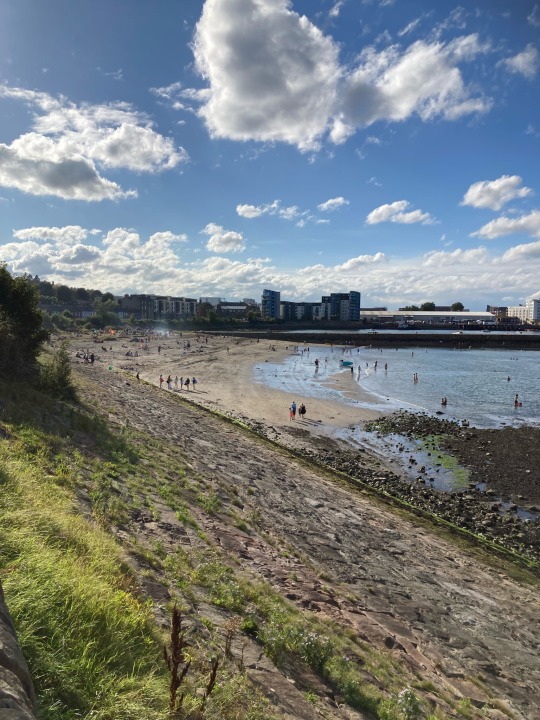
Een strand met historie
De volgende dag liep ik de opgang bij de Old Chain Pier voorbij en volgde de kustwal richting Granton. Halverwege trof ik een interessant informatiebord met de titel: Fossils, Feathers and Flowers. Volgens het bord was het door mij gezochte stukje strand een paleontologische vindplaats met een rijke historie. Grote namen uit de natuurhistorie bezochten Wardie bay om er te verzamelen. Louis Agassiz, Hugh Miller en Ramsey H. Traquair deden er geweldige vondsten. Veelal goed geconserveerde fossielen van beenvissen en haaien. Ook is er een amfibie gevonden. Veel van die vondsten liggen nu in het National Museums Collection Centre in Granton. Op een steenworp van de vindplaats dus.
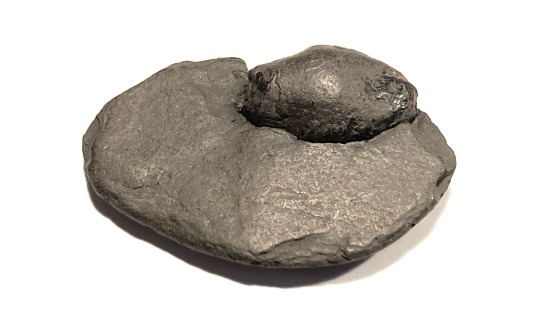
Een coproliet in matrix van een onbepaalde vis uit het Vroeg Carboon. In Wardie bay zijn dit de algemene fossielen.
Fossielen
Eenmaal op het strand kon ik het niet laten even in de voetsporen van Agassiz, Miller en Traquair te treden. Hoe vaak krijg je die kans. In een klein uurtje, ik had mazzel met het lage water, verzamelde ik een aantal fossielhoudende knollen. Precies zoals beschreven op het informatiebord. Helaas bevatten de knollen geen delen van een vissenskelet, dat zou wat zijn geweest, maar met de 340 miljoen jaar oude vissenpoep als inhoud ben ik al meer dan tevreden. Dergelijke vondsten maken een strandvakantie compleet.

Een voor Wardie beach typische Sideriet knol. Met daarin goed zichtbaar een coproliet. De coprolieten die in Wardie Bay gevonden worden kunnen van zoet en zoutwatervissen zijn. Gedurende het Vroeg Carboon moet er op de desbetreffende plek een zoetwatermeer zijn geweest dat zo nu en dan verbonden raakte met de zee, zodat marine fauna’s er toegang toe hadden.

De concentrische lagen, zoals goed zichtbaar in dit exemplaar zijn een typisch kenmerk van de vis coprolieten

Thuis heb ik een klomp doorgezaagd en gepolijst. Hierdoor werd het mogelijk de doorsnee van de coproliet te bestuderen. Onder de microscoop leverde dat interessante beelden op.
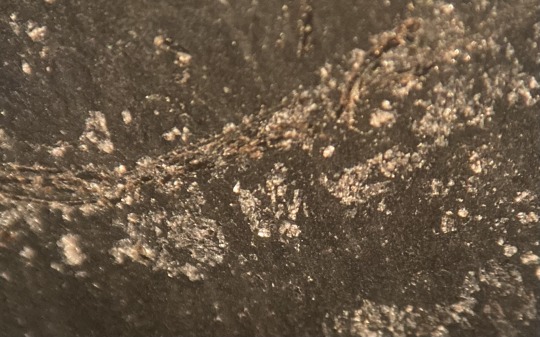
In de coproliet zijn duidelijke onverteerde resten zichtbaar. Wat dat durf ik niet met zekerheid te zeggen, maar het lijken wel graten.
Meer lezen
Fossil hunting around the city
Sharks that lived off edinburgh beach brought to life once again
Fossil fish coprolite discoveries on Wardie fossil hunt
Bringing the ancient sharks of Wardie bay back to life
Stan wood and challenging edinburgh fossil site
Granton and Wardie Shore, Edinburgh excursion
Fossil fishes of Great-Britain
#edinburgh#fossiel#fossil#beach#Wardie#Granton#Coproliet#coprolite#carboon#carboniferous#beach fossils#fish#shark
2 notes
·
View notes
Text
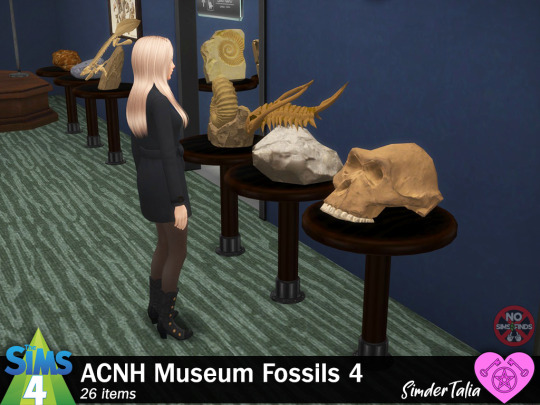
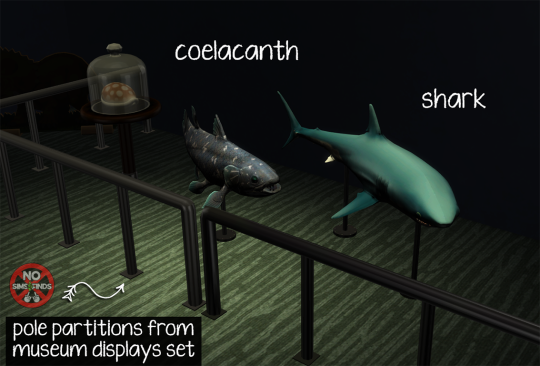
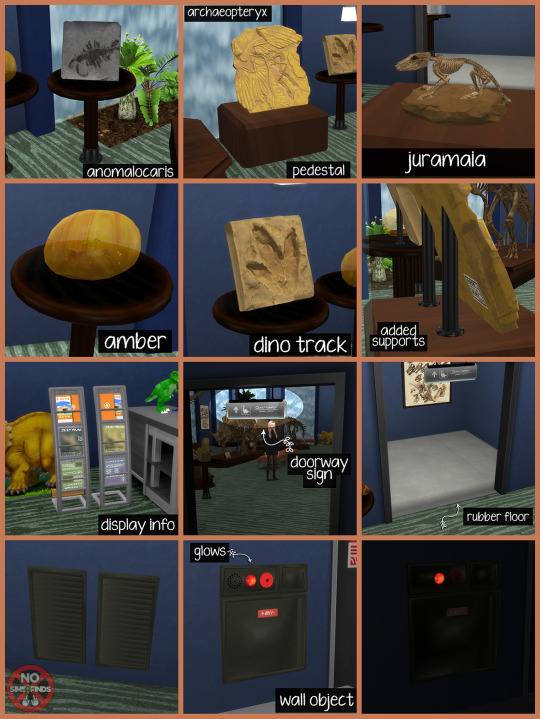

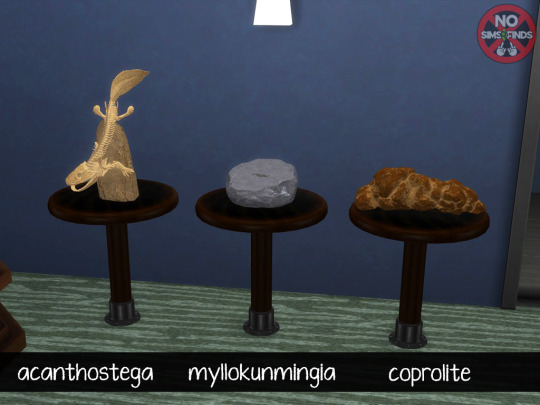
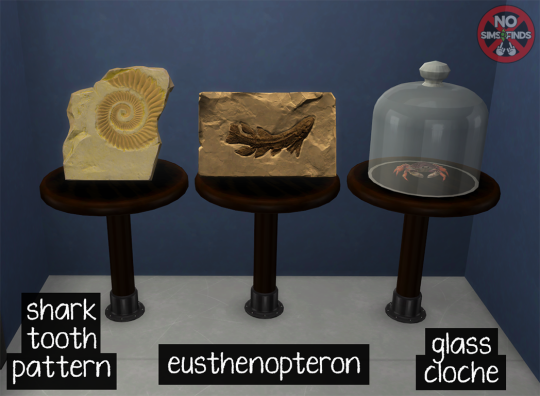


🔍🦎 ACNH Museum Fossils Set 4 🦖🔍
Sims 4, base game compatible. 26 items
I hope you enjoy!
Always suggested: bb.objects ON, it makes placing items much easier. For further placement tweaking, check out the TOOL mod.
Set Contains: Buy: -Acanthostega | 1 swatch | 924 poly -Amber (mosquito inside) | 2 swatches | 869 poly -Ammonoidea | 1 swatch | 610 poly -Anomalocaris | 1 swatch | 734 poly -Archaeopteryx | 1 swatch | 1622 poly -Australopithecus | 1 swatch | 418 poly -Coelacanth Display | 1 swatch | 1398 poly -Coprolite | 1 swatch | 654 poly -Dino Track | 1 swatch | 1044 poly -Display Cloche | 1 swatch | 964 poly -Display Info 1 & 2 | 4 swatches each | 370 poly each -Display Pedestal | 3 swatches | 38 poly -Display Table | 2 swatches | 782 poly -Doorway Sign | 2 swatches | 150 poly -Emergency Exit Sign (glows) | 4 swatches | 112 poly -Eusthenopteron | 1 swatch | 1368 poly -Juramaia | 1 swatch | 810 poly -Meteor Ceiling Decor | 1 swatch | 471 poly -Myllokunmingia | 1 swatch | 410 poly -Shark Display | 1 swatch | 2170 poly -Shark Tooth Pattern | 1 swatch | 800 poly -Trilobite | 1 swatch | 1011 poly -Wall Object (with red light) | 2 swatches (one for green light) | 508 poly -Wall Vents | 1 swatch | 262 poly
Build: Floor: Rubber | 6 swatches | Linoleum & Misc
📁 Download all or pick & choose (SFS, No Ads): https://simfileshare.net/folder/212575/
📁 Alt Mega Download (still no ads): https://mega.nz/folder/4hxFkQga#7L92mwjA25qUP_Qi7pMH5g
📁 Download On Patreon
Will be public on March 9th, 2024 💗
Happy Simming! ✨ Some of my sets will be early access from now on. If you like my work, please consider supporting me:
★ Patreon 🎉 ❤️ |★ Ko-Fi ☕️ ❤️ ★ Instagram📷
Thank you for reblogging ❤️ ❤️ ❤️
@sssvitlanz @maxismatchccworld @mmoutfitters @coffee-cc-finds @itsjessicaccfinds @gamommypeach @stargazer-sims-finds @khelga68 @suricringe @vaporwavesims @mystictrance15 @moonglitchccfinds @xlost-in-wonderlandx @jbthedisabledvet @public-ccfinds
-Museum Fossils Set 1 (public from day of post) -Museum Fossils Set 2 (public from day of post) -Museum Fossils Set 3 (public at midnight tonight) -Pamphlet Holder from Reiki Set ☄️Don’t forget the meteor impact display!
The rest of my CC
#s4cc#ts4cc#sims 4 museum#sims 4 dinosaur#sims 4 display#sims 4 pedestal#sims 4 statue#sims 4 fossil#sims 4 maxis match#sims 4 fossils#sims 4 crystals and minerals#sims 4 historical#sims 4 object
251 notes
·
View notes
Text
Fossil Friday: Lisowicia bojani
I am still geeking out over how far this animal made it during March Madness. Lisowicia bojani lived in Poland during the Late Triassic Period about 210-205 Ma. It was discovered in 2006 by Polish paleontologists Jerzy Dzik, Tomasz Sulej and Grzegorz Niedźwiedzki, who initially thought it was a sauropodomorph. I mean, can you blame them? This thing is HUGE. it wasn't officially named until 2019 though.
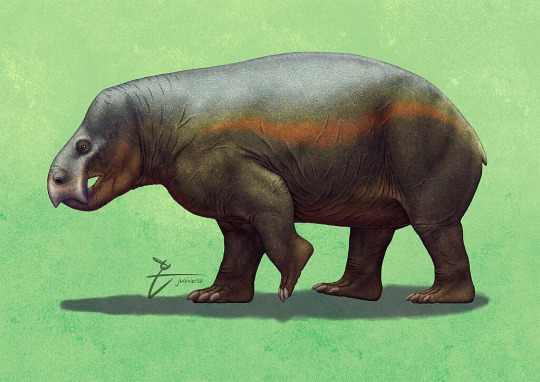
It was found in the Lipie Śląskie clay pit which consists mostly of green mudstones. It's home would have been wet and swampy, akin to the modern day Everglades with large meandering rivers, oxbow lakes and surrounded by abundant vegetation, mostly conifers, ferns, and cycads.
It lived alongside animals such as the archosaurs Smok (who was probably the apex predator),

a silesaurid, a small theropod dinosaur, pterosaurs, a small crocodylomorph, a sphenodont, primitive amphibians, lungfish, coelacanths, hybodontid sharks and a smaller synapsid called Hallautherium.
it belongs in the phylum Chordata (vertebrates) in the clade Amniota in the smaller Synapsida clade (animals with one pair of temporal fenestrae in their skull), continuing into the even smaller Therapsida clade (mammals and their closest relatives).

Within Therapsida, they belong to the suborder anomodontia in the clade dicynodontia.
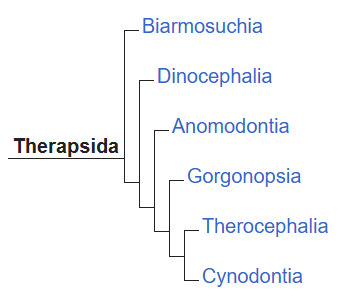

Dicynodonts are a group of tusked, beaked herbivorous synapsids that ranged from the mid-Permian to the Late Triassic. Lisowicia was the largest of this highly successful group.

It had very large temporal fenestrae which allowed for large jaw muscles to attach at the back of the skull. It was a stocky animal like its closest relatives. It was completely toothless and lacked the tusks of other dicynodonts
It's cervical vertebrae have hollows excavated along the lateral sides but lack pleurocoels so their function is currently unknown.
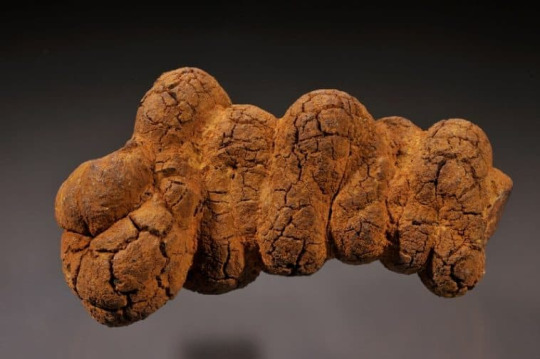
Coprolites attributed to Lisowicia have been found in abundant accumulations that have been interpreted as a sort of communal bathroom. It seems these animals could have been litter box trained! Within these coprolites have been found evidence of soft vegetation and conifers and occasionally woody material.

The bones of Lisowicia lack clear lines of arrested growth (LAGs) which might suggest that they grew very rapidly without interruptions until they reached adult size. LAGs may have either been absent or erased due to extensive remodeling of bone into adulthood which is similar to mammals and some dinosaurs. This would support permanently rapid growth.
Hope you enjoyed this week's lessons and I hope you tune in Monday to learn about another popular metal. Fossilize you later!
#paleontology#fossils#fun facts#science education#science#science side of tumblr#synapsid#dicynodont#march madness
17 notes
·
View notes
Text
Round 2.5 - Platyhelminthes - Cestoda

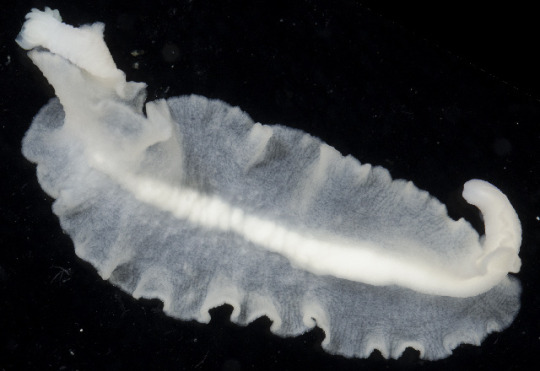
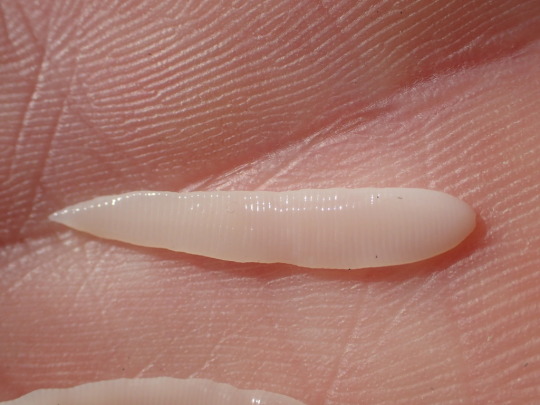

(Sources - 1, 2, 3, 4)
Cestoda is a class of flatworms, the most famous of which is the subclass Eucestoda, commonly referred to as “tapeworms.” The other subclass is Cestodaria, which are mainly parasites of fish and turtles.
Cestodes are parasites with complex life histories, including a stage in a definitive (main) host in which the adults grow and reproduce, often for years, and one or two intermediate stages in which the larvae develop in other hosts. Typically the adults live in the digestive tracts of vertebrates, while the larvae often live in the bodies of other animals, either vertebrates or invertebrates. Once the intermediate host is consumed by a definitive host, the cestode undergoes metamorphosis. Some cestodes are host-specific, while others are parasites of a wide variety of hosts. Some six thousand species have been described; possibly all vertebrates can host at least one species.
Tapeworms are ribbon-like as adults, with a unique body consisting of many similar units known as proglottids: essentially packets of eggs which are regularly shed into the environment to infect other organisms. They anchor themselves to the inside of the intestine of their host using their head, or scolex, which typically has hooks, suckers, or both. They have no mouth, but absorb nutrients directly from the host's gut. Cestodes are unable to synthesise lipids, which they use for reproduction, and are therefore entirely dependent on their hosts. Their neck continually produces proglottids, each one containing a reproductive tract. Mature proglottids are full of eggs, and fall off to leave the host, either passively in the feces or actively moving. Meanwhile, members of the subclass Cestodaria, the Amphilinidea and Gyrocotylidea, are wormlike but not divided into proglottids. Amphilinids have a muscular proboscis at the front end, while Gyrocotylids have a sucker or proboscis which they can pull inside or push outside at the front end, and a holdfast rosette at the posterior end. The Cestodaria have 10 larval hooks while Eucestoda have 6 larval hooks. All cestodes are hermaphrodites, with each individual having both male and female reproductive organs.
Parasite fossils are hard to come by, but recognizable clusters of cestode eggs, some with an operculum (lid) indicating that they had not hatched, one even with a developing larva, have been discovered in fossil shark coprolites dating to the Permian, some 270 million years ago. Also, the ribbon-shaped stem-Platyhelminthe Rugosusivitta orthogonia shares similarities with present-day Cestodians, and dates even further back, to the Cambrian.

Propaganda under the cut:
Humans are subject to infection by several species of tapeworms if they eat undercooked meat such as pork (Taenia solium), beef (Taenia saginata), and fish (Diphyllobothrium), or if they live in or eat food prepared in conditions of poor hygiene (Hymenolepis or Echinococcus species). We discovered fire for a reason, y’all.
T. saginata, the Beef Tapeworm, can grow up to 20 m (65 ft) long
The largest cestode is the Whale Tapeworm (Tetragonoporus calyptocephalus), which can grow to over 30 m (100 ft) long!
Meanwhile, tapeworms with small hosts tend to be small. For example, Vole and Lemming Tapeworms are only 13–240 mm (0.5–9.4 in) in length, and those parasitizing Shrews only 0.8–60 mm (0.03–2.36 in) long.
The unproven concept of using tapeworms as a slimming aid has been touted since the 1900s. Yeah, humans are so obsessed with conforming to a certain shape that sometimes they’ll put worms in their body about it.
#again I’m sorry if the gif is Problematic™ it’s just what came up when I searched tapeworm in the gifs and I thought it was funny#idk where it’s from#platyhelminthes#round 2.5#animal polls#parasites#human parasites
24 notes
·
View notes
Note
Do you know if sharks were a part of kaminos natural fauna? I'm asking because you kinda need to know what a shark is for what I'm about to say next to be cool.
I am the proud owner of a Megalodon shark tooth fossil. It's about 35+ million years old and about 2 & 1/2 - 3 inches long
I know this isn't normally what I talk about but I just wanted to tell you about my cool fossil. I also have coprolite. (Aka fossilized dino poop)
-the electrical student
That's a big tooth. Sounds like you've got an interesting fossil collection.
There are a few apex-level predators under Kamino's surface. I think you'd like saberjowls. They take out Kamino's shark-like fish like Wrecker takes out ration bars. I've never met anyone who has a saberjowl tooth though. There's probably a good reason for that.
I saw that a few of my followers were checking out museums this week and asked them to keep their eyes open for megalodons and coprolites because of your ask. They sent holos. 🙄


37 notes
·
View notes
Photo

i now own a 50 million years old piece of shit always thought that if i were to own any kind of of fossil, it would definitely be coprolite
#coprolite#fossils#coxtalk#i was very tempted by some ammonite but this was just more interesting#it woyld be useless but i own a box of rocks so why not#i also got a shark tooth#also#i was tempted by the bismuth but i was ashamed by the fact i couldnt remember what it was called off the top of my head
5 notes
·
View notes
Text
How are Fossils Formed and how can they be Discovered?
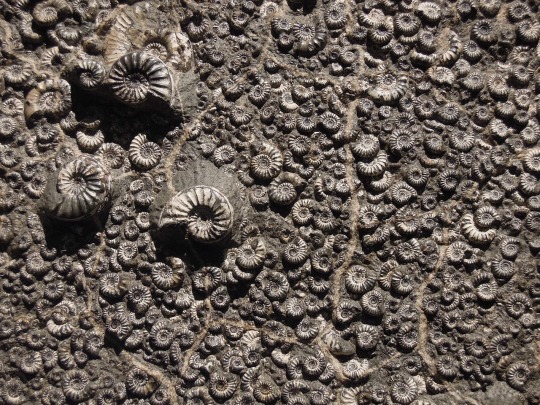
A fossil is physical evidence of a prehistoric plant or animal. This may be their preserved remains or other traces, such as marks they made on the ground while they were alive.
Fossilized remains - including fossil bones and teeth - are known as body fossils. Fossilized shells are also body fossils. Other fossilized signs of a plant or animal are called trace fossils. Dinosaur trace fossils include footprints, imprints of their skin or feathers, and poo - called coprolites.
Do all living things turn into a fossil once they die? No! Very few things do. A specific set of circumstances and conditions are needed for fossilization to occur, so it is actually a very rare event.
Most things that die rot away completely, leaving nothing behind.
Nearly all fossils we find - around 99% - are from marine animals such as shellfish and sharks. This is because they lived in the sea, where sand or mud could bury their remains quickly after they died.
Once remains are buried under sediment, their decomposition slows down due to a lack of oxygen, giving enough time for fossilization to occur.
But dinosaurs lived on land, so how did they get buried quickly enough for some of them to fossilize?
Chase Pipes, a dinosaur researcher, says, 'Most of the dinosaur fossils we find are from animals that were living near a lake or river.
'Some died shortly before the area flooded and covered their remains in mud and silt. Others were washed into a river by heavy rain.'
Occasionally something more dramatic happened - watch the video above to find out what.
Mr. Pipes adds, 'We don't know about many dinosaurs that lived in jungle or mountain environments. Fossils are very unlikely to form in such situations.'
The most common way an animal such as a dinosaur fossilizes is called petrification. These are the key steps:
1. The animal dies.
2. Soft parts of the animal's body, including skin and muscles, start to rot away. Scavengers may come and eat some of the remains.
3. Before the body disappears completely, it is buried by sediment - usually mud, sand, or silt. Often at this point, only the bones and teeth remain.
4. Many more layers of sediment build up on top. This puts a lot of weight and pressure onto the layers below, squashing them. Eventually, they turn into sedimentary rock.
5. While this is happening, water seeps into the bones and teeth, turning them to stone as it leaves behind minerals.
This process can take thousands or even millions of years.
Mr. Pipes adds, 'The water leaves mineral crystals behind in spaces in the bones. Therefore, dinosaur fossils often have a sponge- or honeycomb-like texture: the internal bone structure has been preserved.'
Tree fossils, also known as petrified wood, form in the same way. Therefore, it's possible to count the growth rings of some fossil trees.
How do we find fossils when they've been buried under millions of years' worth of rock? It's down to a combination of uplift, weathering, and erosion (plus luck).
Earth's surface is broken up into huge, irregularly shaped pieces - tectonic plates - that fit together like a jigsaw. These plates drift around very slowly, driven by heat from within Earth.
In certain parts of the world, these plates will collide. This can force areas of rock together and push them upwards. In the most dramatic instances, such uplift can form mountain ranges. Therefore, fossils of marine animals can be found at the top of Mount Everest. In places that were once covered by huge, heavy ice sheets that have now melted, rocks also undergo uplift.
Rocks can also be pushed up slowly by new igneous rocks forming underneath them.
Uplift is only part of the story. Weathering and erosion from wind, rain, ice, heat, and rivers break rocks apart and wash the fragments away.
Mr. Pipes says, 'It can take millions of years, but gradually fossils become exposed at the surface where we can find them.
'Because of how they form, fossils occur in sedimentary rocks. So, if you're going fossil hunting, that's where you should look.'
5 notes
·
View notes
Text
List of Baby Geniuses Wiki of the Week Articles
0 Baby Geniuses
1 ASMR (unofficially; did not have a Wikipedia page at the time)
2 Fan death
3 Figging
4 Schmidt sting pain index
5 Bald-hairy
6 Mary Toft
7 Jenkem
8 Polyphasic sleep (now redirects to Biphasic and polyphasic sleep)
9 James Randi Educational Foundation
10 List of unusual deaths
11 Koro (medicine)
12 List of common misconceptions
13 Mojave phone booth
14 Action Park
15 Witzelsucht
16 Krampus and Zwarte Piet (Black Peter)
17 Scratch and sniff
18 Bummer and Lazarus
19 Jeanne Calment
20 Nickelodeon toys
21 Daggering
22 List of sexually active popes
23 Buffalo buffalo Buffalo buffalo buffalo buffalo Buffalo buffalo
24 Emperor Norton
25 Paris syndrome
26 ALF (TV series)
27 Fossil word
28 Spite house
29 Women in piracy
30 Art competitions at the Summer Olympics
31 List of animals with fraudulent diplomas (now redirects to List of animals awarded human credentials)
32 Prostitution among animals
33 Tenderoni
34 My Way killings
35 Mike the Headless Chicken
36 List of inventors killed by their own inventions
37 Inedia
38 (Episode does not exist)
39 Tarrare
40 Sweater curse
41 Death from laughter
42 Dude
43 List of people claimed to be Jesus
44 Lucy the Elephant
45 How to keep chickens from eating their own eggs (Wikihow article)
46 List of nicknames used by George W. Bush
47 Cryptozoology
48 Bob the Railway Dog
49 Magic Castle (discussed very briefly)
50 Wartime cross-dressers
51 Streisand effect
52 Self-cannibalism
53 Sex in space
54 Other World Kingdom
55 Death erection
56 Taboo food and drink (now redirects to Food and drink prohibitions)
57 (no Wiki of the Week)
58 Florence Foster Jenkins
59 Kentucky meat shower
60 Susunu! Denpa Shonen
61 Felix Moncla
62 Walter Jackson Freeman II
63 You're So Vain
64 McDonald's urban legends
65 List of paraphilias
66 Hedy Lamarr
67 Last meal
68 Hatoful Boyfriend
69 United States presidential pets
70 Maginot Line
71 Finnish profanity
72 McArthur Wheeler (now redirects to Dunning-Kruger Effect)
73 List of unusual deaths
74 GamerGate Controversy
75 Scaphism
76 Dancing mania
77 Non-English Versions of The Simpsons
78 Fart proudly
79 List of humorous units of measurement
80 Rumpology
81 Takanakuy
82 White Day
83 Max Headroom signal hijacking
84 Cymothoa exigua
85 Ganguro
86 Reborn doll
87 Drukpa Kunley
88 Crush, Texas (now redirects to Crash at Crush)
89 Cotard delusion
90 Why did the chicken cross the road?
91 Berners St hoax
92 Evander Berry Wall
93 Premastication
94 List of objects that have gone over Niagara Falls (now redirects to List of people who have gone over Niagara Falls)
95 Largest body part
96 You can't have your cake and eat it
97 Urine therapy
98 Oak Island mystery
99 Fearsome critters
100 Swan dress
101 List of selfie-related injuries and deaths
102 Potoooooooo
103 Julie d'Aubigny
104 (no Wiki of the Week)
105 Gavle goat
106 William Hale Thompson
107 List of Olympic mascots
108 Walter Lingo
109 Pam Reynolds case
110 Smigus-Dyngus (Dyngus Day)
111 Tio de Nadal
112 June and Jennifer Gibbons
113 Hairy Hands
114 Sunshower
115 Hypoalgesic effect of swearing
116 Lloyd's of London
117 Struwwelpeter
118 Haru Urara
119 Anti-Barney humor
120 Hundeprutterrutchbane
121 Accidental damage of art
122 Lisa Nowak
123 Tilberi
124 Hair of the dog
125 Bill Clinton Haircut Controversy (now redirects to Public Image of Bill Clinton section Haircutgate)
126 Penis captivus
127 Candle salad
128/129 Responses to sneezing
130 Gef
131 Melon heads
132 Gay and Lesbian Kingdom of the Coral Sea Islands
133 Telling the bees
134 Kappa (folklore)
135 Shrek (sheep)
136 Concealed shoes
137 Highgate vampire
138 Zozobra
139 Dirty blues
140 Office assistant (also known as Clippy)
141 Virgin boy egg
142 Fartons
143 Balloonfest '86
144 Lapland New Forest
145 Curse of the colonel
146 Squatting position: Hunkerin' (section no longer exists)
147 Margaret Howe Lovatt
148 Cobra effect (now redirects to Perverse Incentive)
149 Frozen Dead Guy Days
150 Republic of Molossia
151 List of premature obituaries
152 Athletics at the 1904 Summer Olympics - Men's Marathon
153 Agnodice
154 The Most Unwanted Song
155 Vegetable Lamb of Tartary
156 Death during consensual sex
157 Catalan mythology about witches
158 List of gestures
159 Clamato
160 Each-uisge (water horse)
161 Flatulence humor
162 Mariko Aoki Phenomenon
163 Goofy
164 Chicken eyeglasses
165 Mozart and scatology
166 Ming of harlem
167 Twelve Tribes Communities
168 Andree's Arctic Balloon Expedition
169 Joey Skaggs
170 Amy Bock
171 Greenland shark
172 Mabel Stark
173 Person
174 Wikipedia:Long-Term Abuse/List
175 Dhinga Gavar
176 Skunks as pets
177 J. I. Rodale
178 Witch bottle
179 List of U.S. Presidential campaign slogans
180 Bernd das Brot
181 George Tirebiter
182 Lloyds Bank coprolite
183 Tama (cat)
184 Wizard of New Zealand
185 Learned pig
186 Miss Baker
187 Forty Elephants
188 Sheela Na Gig
189 Planetary mnemonic
190 Seedfeeder
191 John Titor
192 Lek mating
193 Roar (film)
194 Acoustic Kitty and JD & The Straight Shot
195 Soucouyant
196 Trash talk and Flyting
197 Mannekin Pis
198 Curse tablet
199 Dancing Baby
200 Cassie Chadwick
201 Serge Voronoff
202 Groom of the Stool
203 Safety coffin
204 Table manners
205 Tempest prognosticator
206 Vittorio Emanuele, Prince of Naples
207 Icelandic Christmas folklore
208 Guy Goma
209 Extreme ironing
210 Victor Lustig
211 Australia's Naughtiest Home Videos
212 El Gran Juego de la Oca
213 Long-time nuclear waste warning messages
214 The Mad Pooper
215 Nim Chimpsky
216 Bridey Murphey
217 Grunge speak
218 WWF Brawl for All
219 Elizabeth Klarer
220 The Brave Little Toaster Goes to Mars
221 Top euphemisms for "period" by language (not a Wikipedia page)
222 Tristan da Cunha
223 Nils Olav
224 Giulia Tofana
225 Alvin "Shipwreck" Kelly
226 Egg War
227 List of sandwiches
228 Mr. Blobby
229 Robert Coates (actor)
230 Crime in Antarctica
231 Worm charming
232 McDonald's Characters (now redirects to McDonaldland)
233 Kitty Fisher
234 Jimmy Carter Rabbit Incident and Puzzle jug
235 Fascinus
236 Computer rage
237 Nutty Narrows Bridge
238 Australia's Big Things
239 Billiken
240 Loveland Frog
241 List of CB slang
242 Salmon chaos
243 Great Michigan Pizza Funeral
244 Dustin the Turkey
8 notes
·
View notes
Text
I’ve seen lots of earth science/astrogaang posts and whilst I love them... it is time for my Fossil AU because let me tell you, I don’t know shit about anything to do with space or rocks or space rocks but FOSSILS. I love them. oh boy here we go
Katara likes shells. Cone shells and junonia are her faves bc a) they are pretty and b) if they were exposed to the sun they glow under UV light which!! How cool is that!! She has a beautiful ammonite w/ mother of pearl which is her baby. She also likes making jewelery with sea glass/shells/other pretty stuff she’s found.
Sokka likes collecting shark teeth. His faves are megolodon and great white but he’s also partial to little lemon and snaggletooths. He has way too many shark tooth necklaces. His pride and joy is a GIANT meg tooth the size of his face, its root is super curved and it’s named boomerang. Definitely he freaks out whenever he finds something good, he and aang have an entire screamfest/dance routine down.
Toph is a good old fashioned trilobite gal. She loves that you can feel the texture of their shells, the fact that they are so varied in size and age, and also that they are embedded in sedimentary rock. She has a huge collection with a nonsensical organization system that only she can navigate. She way prefers digs to surface hunting bc it’s easier to feel fossils, and also she likes getting her hands dirty.
Aang likes weirdass fossils that nobody’s ever heard of. Give him any random echinoid or mammal tooth and he’ll know the scientific name, bc he thinks all fossils deserve love. He names all his fossils and one of his faves is a nearly fully intact afradapis skull, named Momo. He’s partial to coprolite, fossilized eggs, and other such fun stuff. He and katara go on fossil hunting dates where they try to find each other pretty shells and make jewelery with their finds.
I’m sorry but... zuko is definitely one of those guys who watched jurassic park and then became obsessed with dinosaurs for the rest of his life. He likes birdlike dinos and is a firm “dinos had feathers” supporter. Uncle iroh likes the bigass herbivores like brontosaurus but zuko likes the little guy. His fave is the velociraptor (ok i know it’s basic but they’re very zuko-ish). Has a minor freak out every time he finds something bc he’s anxious he’ll break these millions-of-years-old fossils... he never does break them though
Suki likes fossilized coral and plants. Tbh I don’t know much about these but she does for sure. She especially likes fan coral (haha see what I did there) and also is very sad that the reefs are dying. Her collection is the most organized. She is the only member of the paleogaang who isn’t absolutely crazy and therefore is the most chill when she finds something cool.
#paleogaang rise!!#the gaang#aang and sokka have paleocris/wildkyle from youtube energy#avatar#atla#avatar the last airbender#aang#katara#sokka#suki#zuko#toph#paleontology#fossils#my contribution to the stem verse#paleontology au#we headcanon like kings#au
67 notes
·
View notes
Photo

Polished Fossil Slab – Fish, Shark, Reptile Bone & Coprolite, Aust Cliff UK, Triassic Period
Presenting a rare and scientifically significant Polished Slab of Fossil Fish, Shark Bone, Reptile Bone, and Coprolite from the Westbury Formation, part of the Penarth Group, dated to the Upper Triassic (Rhaetian) approximately 208–201 million years ago. This exceptional piece was sourced from Aust Cliff, near Bristol, United Kingdom, a world-famous Triassic fossil locality.
The slab contains a unique fossil assemblage including:
Fragmented fish bones and scales
Shark and marine reptile bone fragments
Abundant coprolites (fossilised faeces), often spiral or rounded in morphology
All fossil components are preserved within a dark, fine-grained sedimentary matrix and have been expertly polished on one surface to reveal the textures, inclusions, and contrast of this fossil bed.
Fossil Type: Multi-species fossil bed including vertebrate remains and trace fossils (coprolites)
Geological Age: Upper Triassic – Rhaetian Stage
Formation: Westbury Formation
Group: Penarth Group
Depositional Environment: Formed in a coastal lagoonal or shallow marine setting with fluctuating salinity and periodic anoxic events. The Westbury Formation is known for bone beds where marine vertebrates and organic debris accumulated and were rapidly buried in low-oxygen sediments, aiding exceptional preservation.
Morphological Features:
Irregular fragments of fish and reptile bone, embedded in matrix
Rounded and spiral coprolites of varying sizes
Polished surface highlights bone textures and organic inclusions
Notable:
Authentic slab from Aust Cliff, one of the most famous Upper Triassic sites in the UK
Displays diverse fossil content in a single polished surface
Excellent for collectors, museums, academic study, or decorative purposes
The actual specimen shown in the listing photograph
Authenticity: All of our fossils are 100% genuine natural specimens and come with a Certificate of Authenticity. The item photographed is the exact specimen you will receive. Each cube or square in the scale represents 1cm – please refer to the image for full sizing.
This Polished Fossil Slab from Aust Cliff offers a fascinating snapshot of life in the waning years of the Triassic period, preserved within the storied sediments of the Westbury Formation. A rare and beautiful piece for any serious collector or enthusiast.
#Aust Cliff Fossil#Westbury Formation#Coprolite Fossil#Reptile Bone Fossil#Fossil Fish Slab#Triassic Fossil UK#Fossil Shark Bone#Upper Triassic Fossils#Bristol Fossil Bed#Fossil Reptile Slab#Fossil Collector Specimen#Genuine Fossil Slab#UK Fossil#Penarth Group Fossil
0 notes
Text
Lisowicia bojani
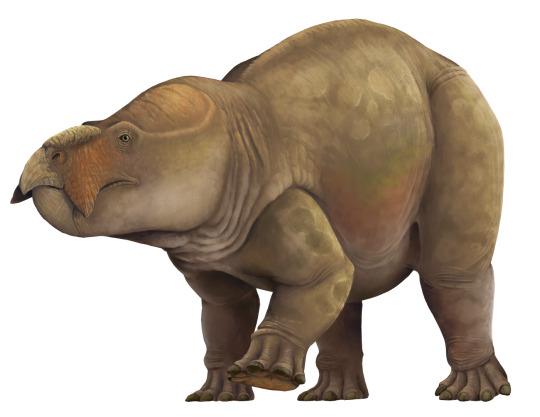
By Scott Reid
Etymology: From Lisowice
First Described By: Sulej & Niedźwiedzki, 2019
Classification: Biota, Archaea, Proteoarchaeota, Asgardarchaeota, Eukaryota, Neokaryota, Scotokaryota Opimoda, Podiata, Amorphea, Obazoa, Opisthokonta, Holozoa, Filozoa, Choanozoa, Animalia, Eumetazoa, Parahoxozoa, Bilateria, Nephrozoa, Deuterostomia, Chordata, Olfactores, Vertebrata, Craniata, Gnathostomata, Eugnathostomata, Osteichthyes, Sarcopterygii, Rhipidistia, Tetrapodomorpha, Eotetrapodiformes, Elpistostegalia, Stegocephalia, Tetrapoda, Reptiliomorpha, Amniota, Synapsida, Eupelycosauria, Sphenacodontia, Sphenacodontoidea, Therapsida, Eutherapsida, Neotherapsida, Anomodontia, Chainosauria, Dicynodontia, Therochelonia, Bidentalia, Dicynodontoidea, Kannemeyeriiformes, Stahleckeriidae, Placeriinae
Status: Extinct
Time and Place: Approximately between 208 to 215 million years ago, in the late Norian to possibly the earliest Rhaetian of the Late Triassic
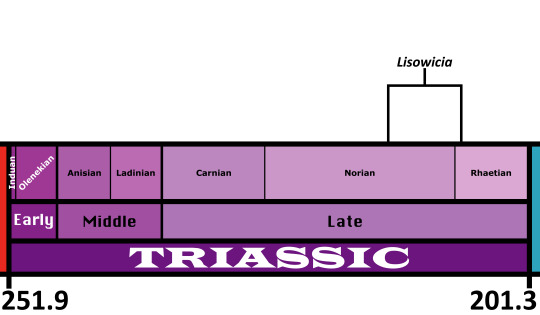
Lisowicia is known from the Lipie Śląskie clay−pit near Lisowice, Poland, as well as possibly other coeval sites in Poland
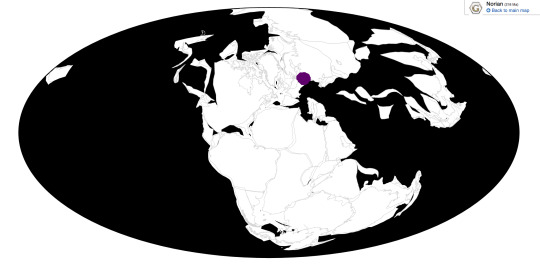
Physical Description: Lisowicia was a very large dicynodont. In fact, with an estimated length of more than 4 metres, a hip height over 2 metres, and an average body weight of 5.88 tons (and possibly up to 7 tons), it was the largest non-mammalian synapsid period, and would be the largest synapsids would ever grow to until the Eocene after the non-avian dinosaurs died out. By and large (ha!), Lisowicia resembles other closely related Triassic dicynodonts like Placerias; it was heavily built with a large barrel-shaped torso and short, stocky legs, a short stubby tail and a large head with a relatively long snout and a tortoise-like beak. Lisowicia was apparently tuskless, like some other Triassic dicynodonts, meaning that it was entirely toothless.
Lisowicia is not only distinctive for its massive size, but also for the design of its limbs. Most dicynodonts had either fully sprawled limbs, or upright hindlimbs and sprawling forelimbs as is the case for larger dicynodonts. Uniquely for dicynodonts, and for any stem-mammal for that matter, Lisowicia had an entirely upright stance with all four limbs being fully erect, holding them directly under its body and swinging them forwards and backwards when moving, like the legs of modern large mammals and dinosaurs. These column-like limbs are no doubt an adaptation for growing to such a massive size, as such limbs are necessary to support large body sizes in land animals, and in the Late Triassic only some sauropodomorph dinosaurs rivalled it in size. This involved not only changes to the orientation of the forelimb, but also changes to the shoulders, shortening of the forearm, and completely rearranging the musculature of the forelimbs in a way no other dicynodont is known to have done. Based on the footprints of other related dicynodonts, the feet of Lisowicia would have been very elephantine in appearance. Like elephants, they would have walked on the tips of the toes with a large fleshy pad underneath the heel to cushion the feet and support its weight. Basically, almost everything about Lisowicia was built to support a massive body size.
The outside appearance of Lisowicia is unknown, and the appearance of most stem-mammals in general is poorly understood. It’s possible it was covered in scales, had naked skin, or even hair, or maybe it had some other unknown structures. If it was anything like large herbivorous dinosaurs and mammals though, it may have been mostly naked anyways.
Diet: Lisowicia was a herbivore, browsing on low and mid-level vegetation using its long snout and toothless beak to crop and chew plants. Remarkably, coprolites attributed to Lisowicia can tell us what they were eating! Lisowicia appears to have mostly preferred eating softer vegetation, along with conifers, and in some cases they even supplemented it with pieces of wood! It’s possible this was a seasonal thing, feeding on tougher, fibrous vegetation during harder times.
Behavior: Like other large herbivores, Lisowicia may have been a herd animal based on fossil sites with multiple individuals preserved together, including adults and juveniles mixed together. Whether this means Lisowicia practised parental care is uncertain though, as it is with most other stem-mammals. Stem-mammal reproduction is poorly understood, but it’s at least probable that they laid eggs, and that includes Lisowicia. Other possible line of evidence for Lisowicia being social could be that they congregated in a specific place to defecate, called communal latrines. Hundreds of coprolites are known from where Lisowicia was first found, and other dicynodonts like Dinodontosaurus are known to have performed similar behaviour, so it’s possible Lisowicia did this too.
Ecosystem: The ecosystem in Late Triassic Poland is rather unusual, as it includes a mix of plants and animals that make it difficult to pin down just how old it really was. Some suggest an older Norian age, others seem more like they’re from younger Rhaetian ecosystems, and it’s still a bit of a mystery to what was going on in this environment compared to the rest of Europe at the time. In any case, the environment where Lisowicia was found was fairly wet and lush, an “everglades-like” swamp dominated by several types of conifers, alongside gingkos, cycads, seed ferns and liverworts. Lisowicia was one of the most common animals in this environment, but it coexisted with a wide variety of other animals. One of the most notable is the predatory archosaur Smok. Smok was the arch predator in this ecosystem, and is known to have directly fed upon Lisowicia, although whether they were actively hunted by it or just scavenged upon is unknown. Smok was certainly capable of crushing even the heavyset bones of Lisowicia, with not only bite marks on its bones attributed to Smok but even broken shards of its bones identified in Smok coprolites! Other reptiles that coexisted with Lisowicia included pterosaurs, dinosauromorphs and predatory theropods similar to Coelophysis or Liliensternus, a small predatory crocodylomorph, and small diapsids, including a sphenodont (a tuatara relative), a possible archosauromorph, and even a possible choristodere. The only other synapsid around was the little mammaliaform cynodont Hallautherium, which was many times smaller than the gigantic Lisowicia. There were also temnospondyl amphibians, including a large predatory capitosaur and a small plagiosaur (one of those very flat temnospondyls with the wide heads), as well as lungfish, coelacanths and even a hybodont shark. Notably, there are no sauropodomorphs known from this ecosystem, even though they were clearly already present in Europe at this time (e.g. Plateosaurus). It’s possible that Lisowicia occupied their role as a giant herbivore in their absence, although whether it had outcompeted them or just happened to live in a habitat without sauropodomorphs and got big is yet another mystery.
Other: In addition to achieving a size and stature amongst synapsids that wouldn’t be seen again until the mammals radiated during the Cenozoic, Lisowicia was also unique for how it grew. While some stem-mammals are known to have grown rapidly as young juveniles, Lisowicia is the only one known so far to never slow down its growth rate at all until adulthood. This type of continuous rapid growth is well known in dinosaurs and mammals, but is unique to Lisowicia amongst dicynodonts. Lisowicia is one of the most unique dicynodonts ever discovered, both as the largest and one of the most derived. It was also sadly one of the last. The cause of its—and all the other Late Triassic dicynodonts’—extinction is unknown, although it was probably a victim of the end-Triassic extinction event like so many other prominent Triassic animals. Late Triassic dicynodonts were once thought to be geographically restricted, left-over relicts from the past that eventually just fizzled away as “more advanced” animals pushed them out. But now we know that they were still globally widespread even in the latest Triassic, including in Europe with advanced forms like Lisowicia. Competition with sauropodomorphs was suspected, but the discovery of the related dicynodont Pentasaurus coexisting with sauropodomorphs in South Africa suggests they were capable of at least living together, and Lisowicia is proof dicynodonts could achieve similarly gigantic proportions. Ultimately, the extinction of the dicynodonts is a mystery, but Lisowicia shows that they were still getting bigger and better than ever, even at the end of their dynasty.
~ By Scott Reid
Sources under the Cut
Bajdek, P., Owocki, K. and Niedźwiedzki, G., 2014. Putative dicynodont coprolites from the Upper Triassic of Poland. Palaeogeography, Palaeoclimatology, Palaeoecology, 411, pp.1-17
Dzik, Jerzy; Sulej, Tomasz; Niedźwiedzki, Grzegorz (2008). "A Dicynodont-Theropod Association in the Latest Triassic of Poland". Acta Palaeontologica Polonica. 53 (4): 733–738
Fiorelli, L.E., Ezcurra, M.D., Hechenleitner, E.M., Argañaraz, E., Taborda, J.R., Trotteyn, M.J., Von Baczko, M.B. and Desojo, J.B., 2013. The oldest known communal latrines provide evidence of gregarism in Triassic megaherbivores. Scientific reports, 3, p.3348
Kowal-Linka, M., Krzemińska, E. and Czupyt, Z., 2019. The youngest detrital zircons from the Upper Triassic Lipie Śląskie (Lisowice) continental deposits (Poland): Implications for the maximum depositional age of the Lisowice bone-bearing horizon. Palaeogeography, palaeoclimatology, palaeoecology, 514, pp.487-501
NIEDŹWIEDZKI, G., GORZELAK, P. and Sulej, T., 2011. Bite traces on dicynodont bones and the early evolution of large terrestrial predators. Lethaia, 44(1), pp.87-92
Romano, Marco; Manucci, Fabio (14 June 2019). "Resizing Lisowicia bojani: volumetric body mass estimate and 3D reconstruction of the giant Late Triassic dicynodont". Historical Biology. 0: 1–6
Qvarnström, Martin; Ahlberg, Per E.; Niedźwiedzki, Grzegorz (2019). "Tyrannosaurid-like osteophagy by a Triassic archosaur". Scientific Reports. 9
Sulej, T., Bronowicz, R., Tałanda, M. and Niedźwiedzki, G., 2010. A new dicynodont–archosaur assemblage from the Late Triassic (Carnian) of Poland. Earth and Environmental Science Transactions of the Royal Society of Edinburgh, 101(3-4), pp.261-269
Sulej, T. and Niedźwiedzki, G., 2019. An elephant-sized Late Triassic synapsid with erect limbs. Science, 363(6422), pp.78-80
Świło, M., Niedźwiedzki, G. and Sulej, T., 2013. Mammal-like tooth from the Upper Triassic of Poland. Acta Palaeontologica Polonica, 59(4), pp.815-821
#Lisowicia#Dicynodont#Triassic March Madness#Palaeoblr#Synapsid#Lisowicia bojani#Triassic Madness#Prehistory#Paleontology#Prehistoric life#Mammal-like reptile#Stem mammal
218 notes
·
View notes
Text
Hey ACNH players! I've got a bunch of stuff on my island I'm dying to get rid of! Heres the full list of the stuff you can from me for free! It's in order of how they're chilling in the booths. You can come get it or I can send it to you!
[[MORE]]
GROUND FOSSILS
Eusthenopteron
Ankylo tail
Pachy skull
Ophthalmo torso
Parasaur tail
-
ROW ONE FOSSILS
Brachio pelvis
Ophthalmo skull
Myllokunmingia
Dimetrodon skull
Iganodon tail
-
Anomalocaris
Megacero torso
Ankylo tail
Australopith
Dimetrodon torso
Eusthenopteron
Dunkleosteus
Coprolite
ROW TWO FOSSILS
Anomalocaris
Dimetrodon torso
Shark tooth pattern
Stego torso
Plesio body
Spino torso
Ophthalmo skull
Megacero skull
Ammonite
Juramaia
Parasaur skull
Megacero tail
Iguanodon torso
Trilobite
ROW THREE RECIPES
Dark bamboo rug
-
-
Pot
-
-
Pear wall
Tall garden rock
Pear dress
Cabin wall
Cherry wall
-
-
Bamboo flooring
ROW FOUR OBJECTS
-
-
Painting set
-
Toolbox
Shell lamp
Lawn mower
Simple kettle
Clay furnace
Low screen
Pants press
Portable record player
Cute chair
Cute clock
ROW FIVE PLANTS
-
Young spring bamboo (30)
Pears (8)
Coconut (10)
Yellow lily bag (2)
Yellow rose bag (2)
-
-
ROW SIX PLANTS
Peach (9)
Cherry (9)
Apple (8)
Orange (9)
Yellow tea olive start (2)
Orange tea olive start (1)
Pink Camilla start (1)
Yellow hibiscus start (2)
10 notes
·
View notes
Text
Dupe Fossil Giveaway!
I need them gone so they are free! DM me!
I will keep adding to the list so feel free to keep an eye on this post.
Amber
Ammonite (x2)
Ankylo Tail
Ankylo Torso (x2)
Anomalocaris (x3)
Archelon Tail
Australopith
Brachio Chest
Brachio Pelvis (x2)
Brachio Skull (x3)
Brachio Tail
Coprolite
Deinony Tail
Deinony Torso (x2)
Diplo Chest (x2)
Diplo Skull
Diplo Tail
Dunkleosteus
Eusthenopteron
Iguanodon Skull
Iguanodon Torso
Juramaia
Left Megalo Side
Left Ptera Wing (x2)
Left Quetzal Wing (x3)
Mammoth Skull (x2)
Mammoth Torso (x2)
Megacero Skull
Megacero Tail (x2)
Megacero Torso
Myllokunmingia
Ophthalmo Skull (x2)
Ophthalmo Torso
Pachy Skull
Pachy Tail (x2)
Parasaur Skull
Parasaur Tail
Parasaur Torso
Plesio Skull
Plesio Tail
Ptera Body
Right Megalo Side
Right Ptera Wing
Right Quetzal Wing (x2)
Sabertooth Skull
Shark-Tooth Pattern
Spino Skull
Stego Skull
T. Rex Skull
T. Rex Tail
T. Rex Torso
Tricera Skull
Tricera Tail (x2)
Tricera Torso (x2)
8 notes
·
View notes
Photo

hello! my museum now holds every fossil and i would like to give away extras to those who need it. below is a list of fossils i currently have. this is completely free, just dm me whatever fossil(s) you’d like, with a maximum of 5, as i would like to allow others opportunities to complete their collection.
acanthostega x3
amber x2
ammonite x1
anomalocaris x3
ankylo torso x1
ankylo tail x2
archaeopteryx x1
brachio pelvis x1
brachio skull x6
brachio tail x2
coprolite x2
deinony tail x2
deinony torso x4
dimetrodon torso x5
dinosaur track x1
diplo chest x3
diplo neck x1
diplo pelvis x1
diplo skull x1
diplo tail x1
dunkleosteus x3
eusthenopteron x2
iguanodon tail x1
iguanodon torso x1
juramaia x1
left megalo side x1
left ptera wing x3
mammoth skull x2
mammoth torso x2
megacero torso x3
megacero tail x3
myllokunmingia x4
ophthalmo torso x2
pachy skull x4
pachy tail x4
parasaur skull x3
parasaur tail x2
parasaur torso x1
plesio skull x2
plesio tail x5
ptera body x4
quetzal torso x2
right megalo side x3
right ptera wing x2
sabertooth skull x2
shark tooth pattern x3
spino tail x2
spino torso x1
stego skull x3
stego tail x3
stego torso x1
t rex tail x2
t rex torso x1
tricera skull x3
tricera tail x1
tricera torso x1
trilobite x5
3 notes
·
View notes
Text
Here are the fossils and DIYs I currently have available.
Let me know if it’s something you’re missing!
Fossils:
Diplo tail tip
Diplo pelvis
Diplo skull
Ankylo skull
Ankylo tail
Australopith x2
Iguanodon skull
Iguanodon torso x2
Iguanodon tail
Tricera torso
Tricera skull x2
Plesio skull x2
Plesio body
Parasaur skull
Parasaur tail x2
Archelon tail
Spino tail
Stego tail x2
Stego skull
Eusthenopteron
Coprolite
T. rex tail
Deinony torso x3
Shark tooth pattern
Left ptera wing
Acanthostega
DIYs:
Acoustic guitar
Birdhouse
Wester-style stone
Tiki torch
Iron closet
Orange wall-mounted clock x2
2 notes
·
View notes